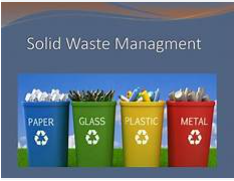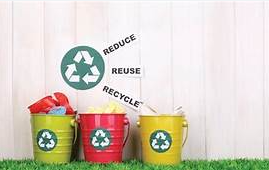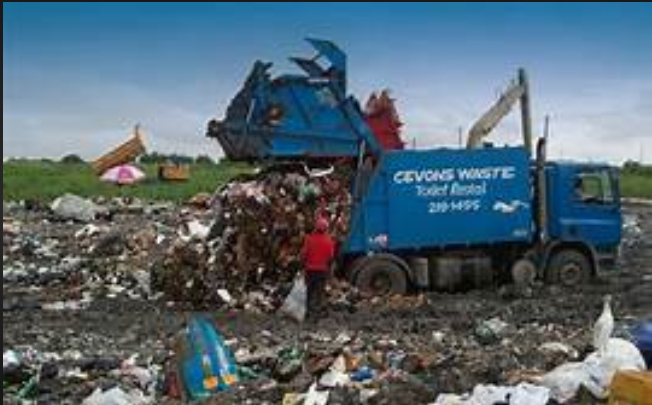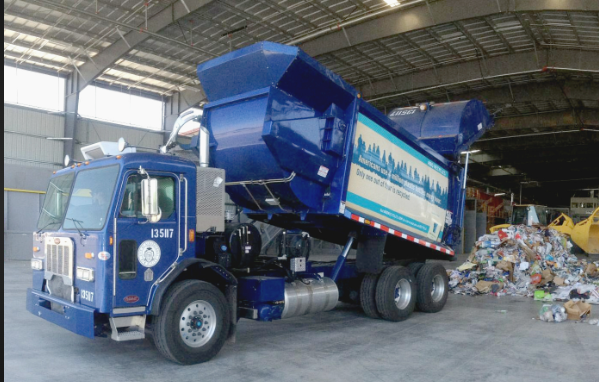Solid Waste Management, Definitions, Types, and Methods
Solid Waste Management, Definitions, Types, and Methods
Solid waste management includes the process of collecting, treating, or disposing of waste. It is important for students to identify sources of solid waste. Solid waste management is an important chapter of geography and a part of social studies. Social Studies include three disciplines: History, Social Studies, and Geography. The average marks obtained in these subjects are taken into consideration in social studies.

The sources of solid waste are municipal solid waste, agricultural solid waste, construction waste, sewage sludge, solid waste from various fields, and many more. In this article, we will talk about municipal solid waste management, solid waste management regulations, and more. Students can read this article to understand the concepts related to solid waste management.
Types of Solid Waste Management
The management system that manages the collection, source separation, storage, transport, transfer, processing, treatment, and disposal of solid waste is called solid waste management.

Organic Solid Waste
Biodegradable waste that decomposes in the digestive process gives off an abusive and offensive odor when left intact. Like waste from food, sewage sludge, green waste, etc.
Inorganic Solid Waste
Solid that does not degrade anyway. Waste in this category can be flammable, depending on the type and nature of the ingredient. For example, rubbish.
Also, Read
- Greenhouse Gas its Effects and Greenhouse Gases emissions
- Effects of Acid Rain, Its Most Important Effects on Human
- Watershed Management its Developmental Projects and its Significance
- What is a bumblebee, Lifecycle, Description, Lifecycle & Facts
Functional Elements of Solid Waste Management
Waste Production
Materials identified and collected are removed or collected for disposal.
On-site handling, storage, and processing
Activities related to the handling, storage, and processing of solid waste at or near production sites.
Collection
Collection and disposal of solid waste from various places.
Transportation and Transportation
Transportation of waste from smaller collection trucks to larger transportation at landfills.

Processing and Recovery
These technological equipment and facilities are used to increase the efficiency of active elements and to recover useful materials, processing products, or energy from solid waste.
Disposal
Disposal of waste at a point of differentiation.
Common Solid Waste Disposal Methods
In rural areas, the simplest and most practical intermediate methods for solid waste treatment/recycling and disposal are:
Waste disposal: Waste reduction type of waste generation is used in both cities and towns to reduce waste. Biomass is broken down into simpler forms and converted into natural fertilizers for plants.

Waste/Visible Disposal: Solid waste that is not recycled or used must be disposed of. Exclusion is based on several factors. This type of satisfaction is called a controlled strategy. It is a way of separating all types of waste without the hassle of sorting or sorting.
Here are some of the classification procedures:
(a) Disposal and collection areas near drainage systems, adjacent to roads and roads, etc. should first be identified and should be located at such locations.
(b) Hollow soil adjacent to well for future use.
(c) Daily disposal of solid waste or accumulated debris in the pit.
- d) Cover soil daily with pit residue and let it decompose. After the hole is filled, plants can be grown on it.
Agricultural waste:
Land reclamation helps to separate weeds, and fragile waste, as well as recycling and recycling for land reclamation.
Incineration:
Incineration is a process of dry oxidation at high temperatures that reduces hot-rolled materials and solvents and non-combustible materials and reduces the waste and weight of the material.
Risk Associated with Poor Solid Waste Management
- Solid waste can contain infectious diseases such as mosquitoes, ticks, and mosquitoes. You have reached your birthplace.
- Unconventional wastes often lead to the formation of water bodies, which often create gaps that can cause flooding and pollution.
- Burning household waste pollutes the environment.
- Waste disposal and gas suction present a fire hazard.
- It typically uses air, water, and air pollution such as gas, solvents, ash, leachate, and unwanted piles.
Advantages of Solid Waste Management
- Pest control
- Help it to avoid many settlements.
- The steam word used about electricity to weeks without water
- Reminiscent of the degree of deterioration of the massive environmental degradation
- Increase the life of Landfills
Disadvantages of Solid Waste Management
- The solid waste handling equipment used is expensive.
- The operator must regulate the collection of waste in each successive season; otherwise, public health may be at risk.
- Combustion of other solid waste produces highly toxic gases.
- Difficulty separating or sorting
Developments in waste management
In the second half of the 19th century, technical approaches to solid waste management began to develop. Waterproof bins were first introduced in the United States and more durable vehicles were used to collect and transport waste. Significant developments in the recycling and disposal of solid waste took place in 1874 with the construction of the first incinerator in England.
At the turn of the 20th century, America’s largest cities burned 15 percent of their solid waste. Yet many large cities still use primitive methods, such as open land or water dumps.
Technological progress continued in the first half of the 20th century with the development of waste collectors, compaction machines, and pneumatic collection systems, but by the middle of the century, it became apparent that a problem arose from open landfill pollution and inappropriate waste incineration.
Public health. Sanitary shaking stations have been developed to reduce dependency. Many countries have divided waste into two categories, hazardous and non-hazardous, and have developed separate regulations for their disposal.
Landfills are designed and operated to minimize risks to human health and the environment. The new waste incinerators are designed to recover thermal energy from waste and are equipped with comprehensive air pollution control equipment to meet strict air quality standards. Modern solid waste management facilities in most developed countries now emphasize waste recycling and reduction at source rather than incineration and disposal on site.
Generation and storage
The formation of solid waste varies greatly. In the United States, for example, an average of about 2 kilograms (4.5 pounds) is produced per person per day. Japan produces about half that amount, while Canada costs 2.7 kilograms (about £6) per person per day. In some developing countries, the average per capita intake may be less than 0.5 kilograms (1 pound) per day. This data includes waste from commercial, industrial, industrial, and residential sources.
When planning a solid waste management project, the community should have a clear idea of the actual amount of waste generated. Most communities must store household waste in a sturdy container with an easy-to-clean lid to prevent rodent and insect attacks and attacks. It smells good. In general, metal or galvanized plastic containers with a capacity of about 115 liters (30 gallons) are used, but in some areas, they can be lifted mechanically and loaded onto a rolling truck.

Plastic bags are often used as disposable items and containers on the street. If you have a large amount of waste, such as a business, hotel, or apartment building, you can use a dumpster to temporarily store waste until it is collected. Some office and commercial buildings use on-site filters to reduce waste.
Solid Waste Collection
Collecting and transporting
Effective solid waste collection is essential to protect public health, safety, and environmental quality. It is a labor-intensive process that costs approximately three-quarters of the cost of solid waste management. This work is often entrusted to the authorities, but sometimes it is more beneficial if private companies act on behalf of the municipality or individual homeowners pay private collectors. Each receiving vehicle consists of a driver and one or two loaders. These vehicles are typically closed, stacked vehicles with volumes up to 30 cubic meters (40 cubic meters). Loading can be done forward, backward, or sideways. It also reduces the amount of garbage in the truck to less than the amount of light.
Choosing the best method of collection is a difficult challenge, especially in large densely populated cities. The best path is the one that uses the most personnel and resources, and choosing such a path requires the use of computer analysis that considers all the technological variables in a large and complex network Storage of variables Included frequency, transportation needs, type of service, and weather. Garbage collection in rural areas can be a particular challenge due to low population density, resulting in high unit costs.
Due to the high degradation of food waste, waste is usually collected at least once a week. Waste from individual households can be reduced through the use of composting facilities or landfills. Surface waste is an additional burden on sewage systems, but it is generally manageable. Many communities now run resource separation and recycling programs where homeowners and businesses separate recyclables from their waste and place them in separate containers for collection. In addition, there are several places where it is possible to apply recyclable materials.
Transfer Stations
If the final destination of the waste is not close to the community where the waste comes from, one or more landfills may be required. A waste container is a central location for waste from several collection vehicles in one large vehicle, such as a tractor-trailer. The open trailer is designed to transport approximately 76 cubic yards (100 cubic meters) of unrefined waste to a landfill or local landfill.
There is also a closed trailer of the compressor type, but it must be equipped with a casting mechanism. For stations of the direct waste disposal type, the collection trolley is installed directly on the transport trolley. In some types of landfills, the waste is first dumped into a storage pit as a platform and then a machine is used to lift the waste and push it into a truck. The largest landfill can handle more than 500 tons of waste per day.
Solid-waste treatment and disposal
Once collected, the local waste can be treated to reduce the total collection and weight of the waste completely. Treatment changes the appearance of the waste and makes it easier to maintain. It can also help various objects, as well as firepower, to move or use it.
Landfill Dumping
Landfills are a common way to dispose of household solid waste. The garbage can is safely placed in landfills that are carefully selected, planned, built, and operated to protect the environment and human health. One of the most important factors associated with soil erosion is that buried waste does not end up in the surface or groundwater.
Technical requirements include a minimum distance between the landfill and groundwater during periods of high water levels. New features typically need an infinite barrier or barrier in the soil as well as a putting system to monitor groundwater. The compost should be covered with mold-resistant material to prevent rain and water from leaking into the compost bin. It can be made of soft rubber, clay, or a mixture of both.
Conclusion
Hope so, you have read the complete topic about Solid Waste Management. I tried my best to provide authentic information to you. If you have any questions regarding this topic you can ask freely. This is a very interesting topic. You can give your opinions in the comment section box.